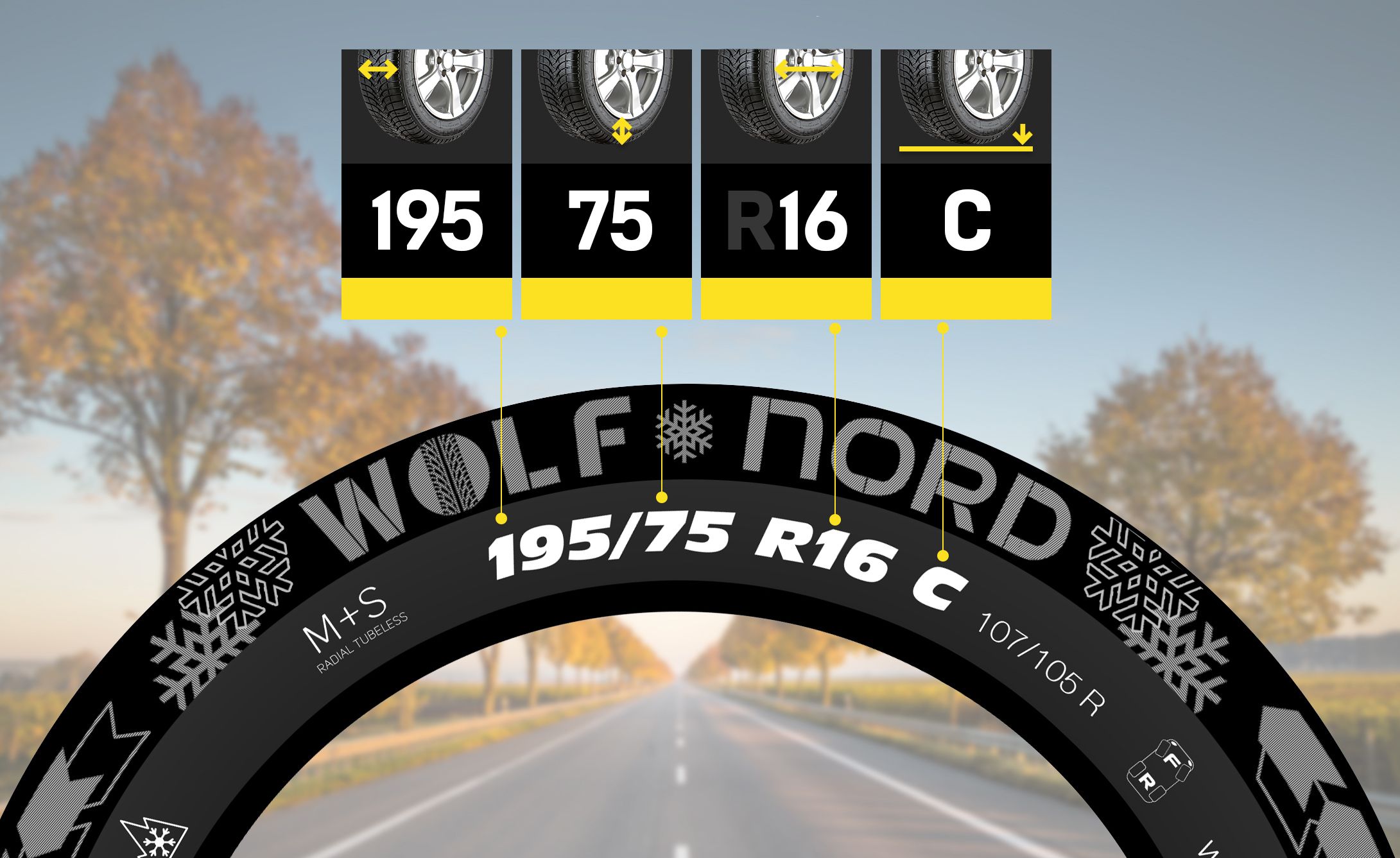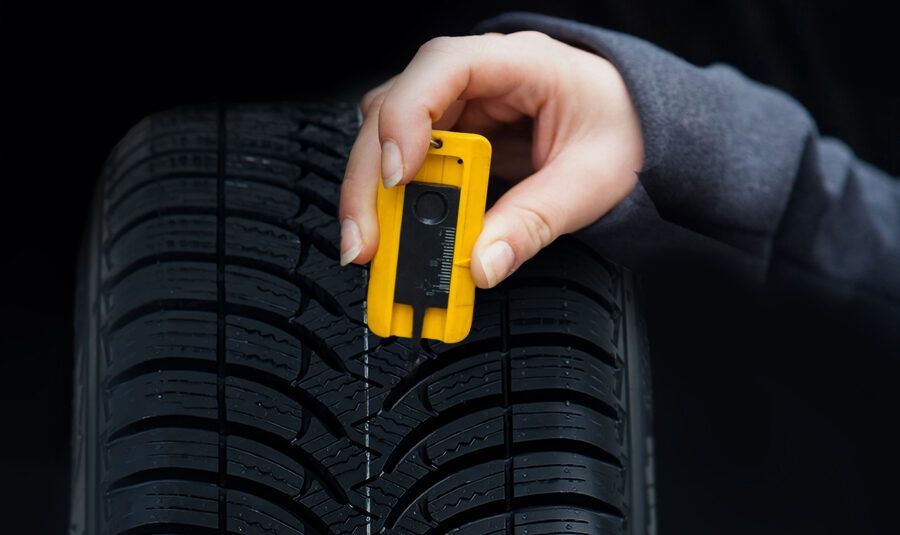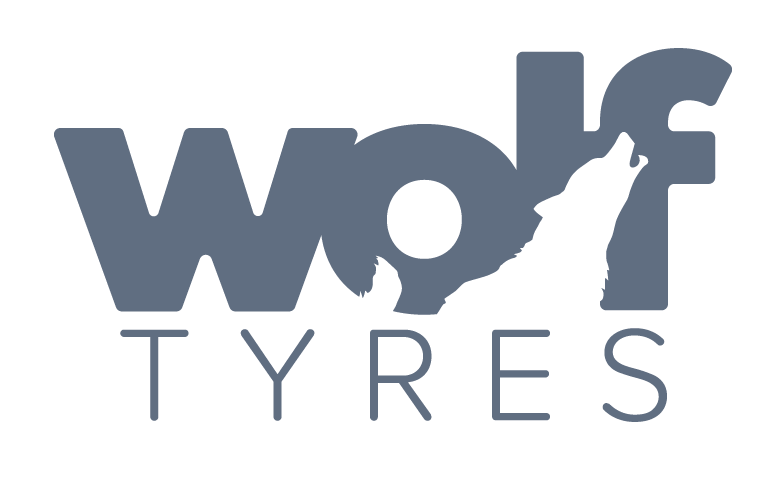
Tyre marking
The majority of producers use standard marking for tyres. Basic information is given on the tyre sidewall, with the following brief data on the size,

The majority of producers use standard marking for tyres.
Basic information is given on the tyre sidewall, with the following brief data on the size, main technical characteristics, technology, production date, producer country etc.
The main parameter you need to pay your attention to is an appropriate size of the tyre for your car. The numeric designation of the size on the sidewall of the tyre looks like this “205/55R16”. As a rule, for each vehicle brand optimal sizes are recommended; there can be several of them and they are interchangeable.
205/55R16
205 – the width of tyre section, specified in millimeters
55 — The ratio between the height of the tyre section and its width, specified in per cents
R — Alphabetical code designating the type of the tyre. R stays for tyres with the radial carcass
16 — Tyre diameter at rim seat, corresponds to the rim diameter of the wheel disk, specified in inches
There are two indices shown on the tyre: speed rating and load index. E.g. for marking “205/55R16 98W”
98 stands for load index per a wheel
W stands for the maximum speed indication
Tables for speed ratings and load indices
| Speed ratings | |||||||||
| Rating | Q | R | S | T | H | V | W | Y | ZR |
| km/h | Up to 160 | Up to 170 | Up to 180 | Up to 190 | Up to 210 | Up to 240 | Up to 270 | Up to 300 | Higher than 240 |
| Load indices | |||||||||||||
| Index | kg | Index | kg | Index | kg | Index | kg | Index | kg | Index | kg | Index | kg |
| 68 | 315 | 69 | 325 | 70 | 335 | 71 | 345 | 72 | 355 | 73 | 365 | 74 | 375 |
| 75 | 387 | 76 | 400 | 77 | 412 | 78 | 426 | 79 | 437 | 80 | 450 | 81 | 462 |
| 82 | 475 | 83 | 487 | 84 | 500 | 85 | 515 | 86 | 530 | 87 | 545 | 88 | 560 |
| 89 | 580 | 90 | 600 | 91 | 615 | 92 | 630 | 93 | 650 | 94 | 670 | 95 | 690 |
| 96 | 710 | 97 | 730 | 98 | 750 | 99 | 775 | 100 | 800 | 101 | 825 | 102 | 850 |
| 103 | 875 | 104 | 900 | 105 | 925 | 106 | 950 | 107 | 975 | 108 | 1000 | 109 | 1030 |
| 110 | 1060 | 111 | 1090 | 112 | 1120 | 113 | 1150 | 114 | 1180 | 115 | 1215 | 116 | 1250 |
| 117 | 1285 | 118 | 1320 | 119 | 1360 | 120 | 1400 | 121 | 1450 | 122 | 1500 | 123 | 1550 |
Winter — winter tyres
Rain, Aqua, Water or symbol of an umbrella mean high efficiency of the tyres on a wet road
AS (All Season) — all-weather tyres
M+S (Mud+Snow) – all-season tyres efficient when driving on slush (mud and snow mash)
Three-peak mountain snowflake – a symbol of a snowflake on the three-peak mountain background means the enhanced security and high steerability characteristics. These tyres are capable of coping with their tasks on the most difficult surfaces: on ice-covered stretches of the road and thick snow cover.
Studless – winter non-studded tyres or friction tyres
Stud, Studded – studded or studdable winter tyres
Left/Right – indications for obligatory mounting on the right or left side of the car
Inside/Outside – this marking designated the inside/outside side of the tyre with the assymmetric tread pattern
TL, Tubeless– a tyre without an inner tube
С/Cargo — tyres for light trucks
Performance, High Performance – high-performance, high-speed tyres
Runflat, RunOnFlat, RFT, SSR, ZP – this marking is used to show that the tyre was manufactured by a special technology, which in case of a puncture allows you to drive up to150 km on a flat tyre
SL (Standart Load) — tyres for ordinary loads
XL (Extra Load) — tyres for high loads
RF — (Reinforced) — tyres of reinforced design
TWI — Tire Wear Index —— tread wear indicator – a section bearing information showing the degree of tyre tread wear
Colour stripes on tyres — do not carry any information on decoding wheel markings. This marking is done on the manufacturer factory or in the warehouse to make the search for the required types of tyres easier.
Wolf Tyres manufactures passenger car tyres which are capable to cope with trecherous driving conditions and to provide safe transportation, and which are intended for installing on passenger cars, crossovers and light trucks.

The majority of producers use standard marking for tyres. Basic information is given on the tyre sidewall, with the following brief data on the size,

Tyres for minibuses: popular models Tyres for minibuses are light commercial vehicle (light truck) tyres intended for vehicles carrying cargoes or passengers. Requirements set for

Weather conditions are considered to be winter ones, when there is snow, ice or slush on any stretch of the road, as well as if

Kummar rehvid OÜ
Reg. no 16211880
PARGI 24,
Voka 41701
IDA-VIRUMAA, ESTONIA
+372 5883 7020
info@wolftyres.ee